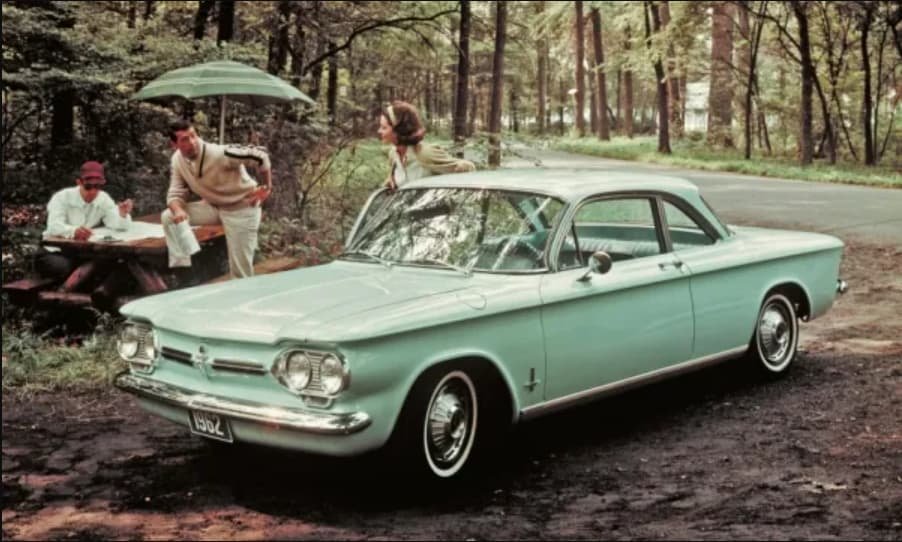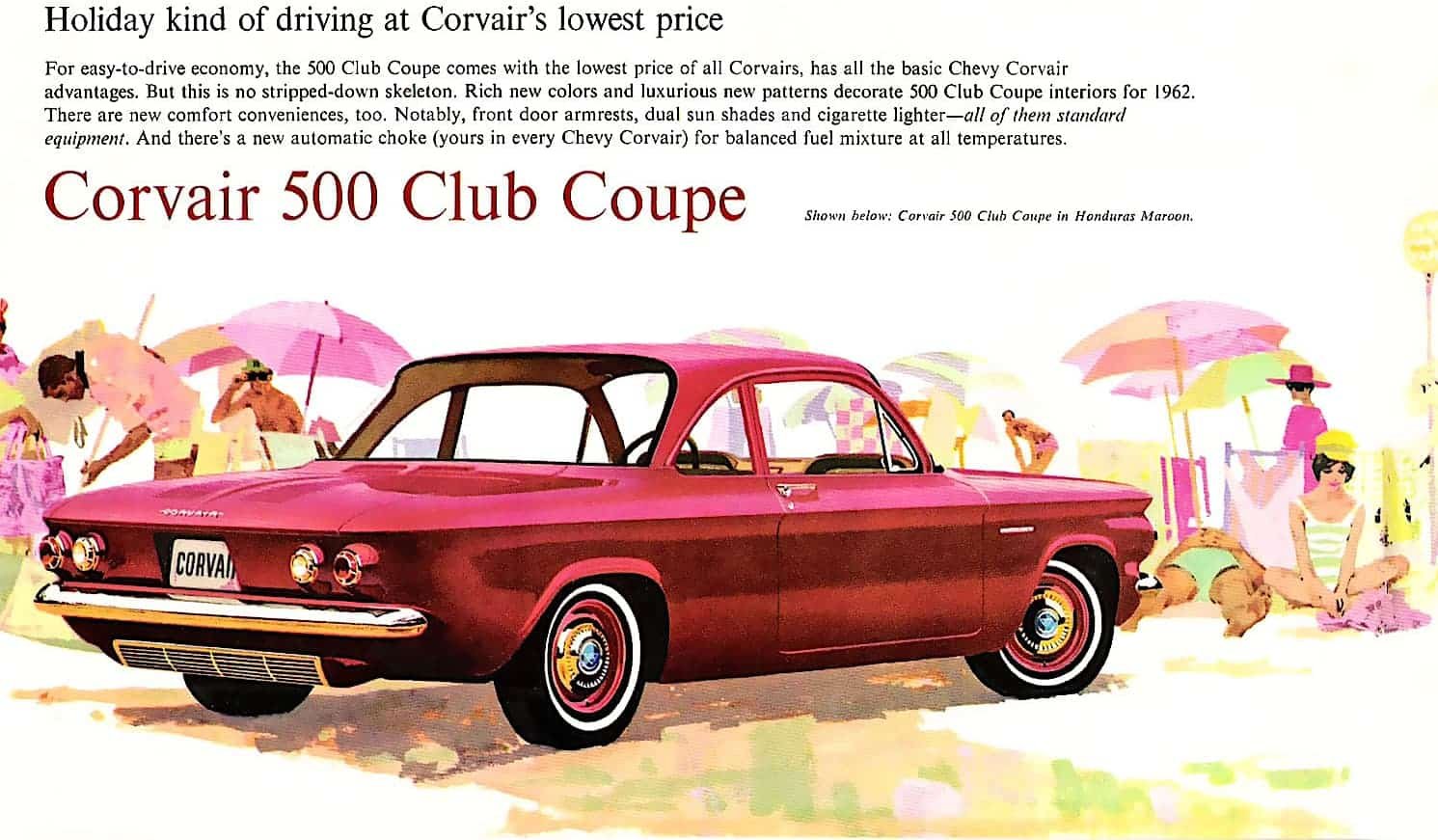The Car That Inspired The Mustang: 1960-64 Corvair Monza
When it comes to the car that played a pivotal role in inspiring the iconic 1965 Ford Mustang, one might not immediately think of the Chevrolet Corvair Monza from 1960 to 1964.

However, former Ford executive Lee Iacocca openly admitted in his 1984 memoir, “Iacocca: An Autobiography,” that the concept behind the Mustang was heavily influenced by a competitor’s vehicle—the Chevrolet Corvair.

Iacocca revealed that General Motors had taken the Corvair, originally an economy car, and transformed it into the popular Corvair Monza by adding sporty features such as bucket seats, a manual transmission, and stylish interior accents. Recognizing the potential in the growing market for such vehicles, Iacocca and Ford set out to develop their own offering.

The Corvair Monza made its debut in May 1960, featuring a complete vinyl interior with front bucket seats, plush carpeting, a special steering wheel with a chrome horn ring, and other luxurious extras. Although sales started off a bit slow in its partial first year, they skyrocketed in 1961, surpassing 140,000 units—more than half of the Corvair’s total deliveries. In 1962, a convertible and a wagon joined the Monza lineup, and later that year, the Monza Spyder Coupe and Convertible were introduced, offering a turbocharged 150-horsepower version of the air-cooled flat-six engine, along with other performance enhancements.

To the car buyers of the early 1960s, the Corvair Monza presented a compelling package. Its bucket seats, vinyl-clad cockpit, and four-speed floor shifter, complete with a distinctive white cue-ball gearshift knob, evoked a touch of the Corvette’s spirit within the compact Chevy. General Motors’ interior stylist, Blaine Jenkins, was credited with the captivating design of the Monza’s cabin. In their print campaign, Chevrolet’s advertising team even made sure to draw a connection between the Monza and the Corvette.

Lee Iacocca and his hand-picked task force, the Fairlane Committee, carefully studied the success of the Corvair Monza. They recognized the imminent explosion of the 18-to-34 age group, foreseeing that this demographic would soon make up more than half of the new car market. The Monza appealed to these young buyers, and it became clear to Iacocca that Ford needed to enter this segment. While the 1961 Ford Futura, a bucket-seat version of the Falcon, served as a temporary solution, it was the launch of the 1965 Mustang on April 17, 1964, that truly signaled Ford’s full-scale engagement in the youth market.

The Chevrolet Corvair Monza, with its sporty features and stylish appeal, laid the groundwork for the Mustang’s development. It showcased the demand for compact, performance-oriented cars and played a vital role in shaping the iconic pony car we know today.




